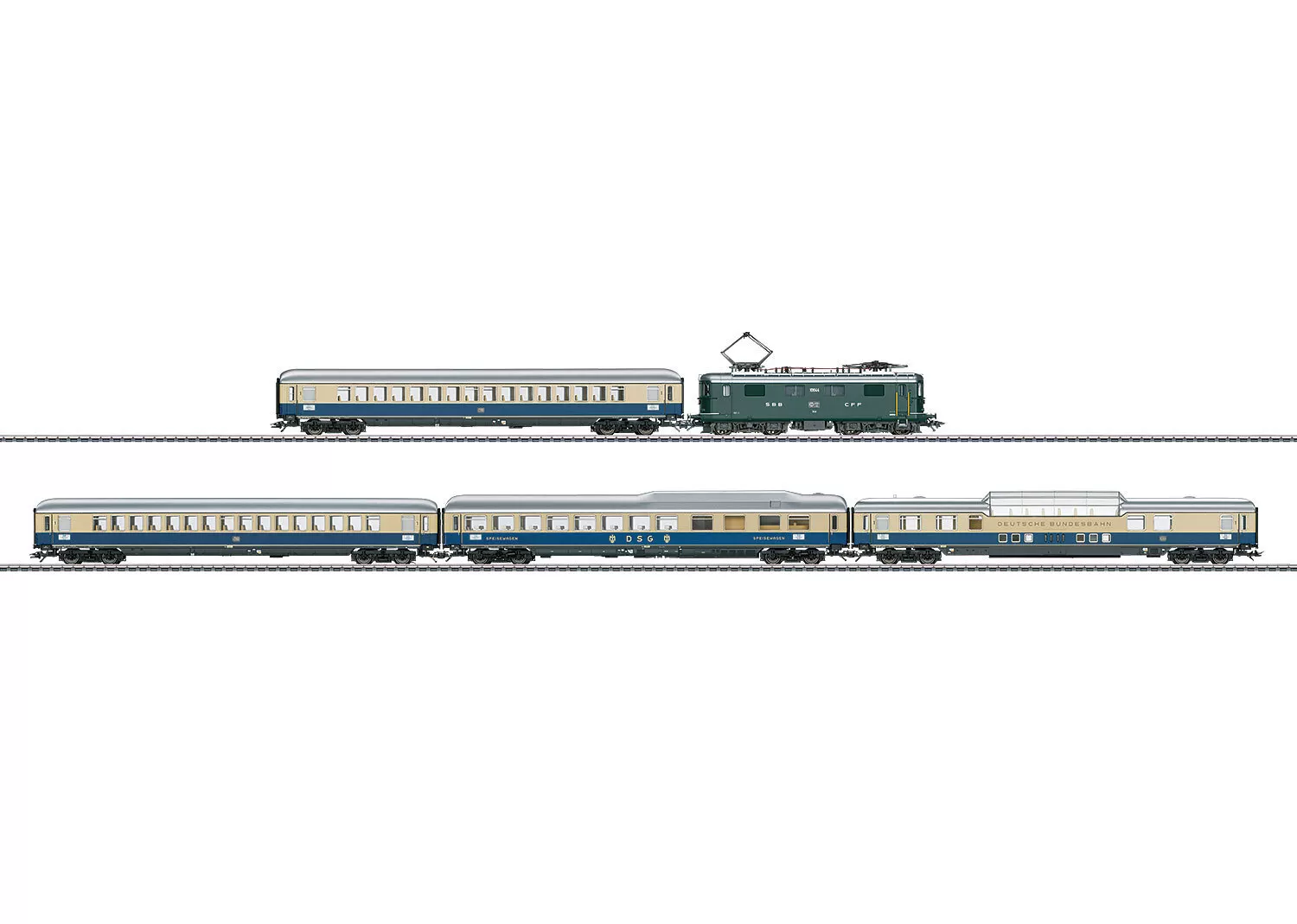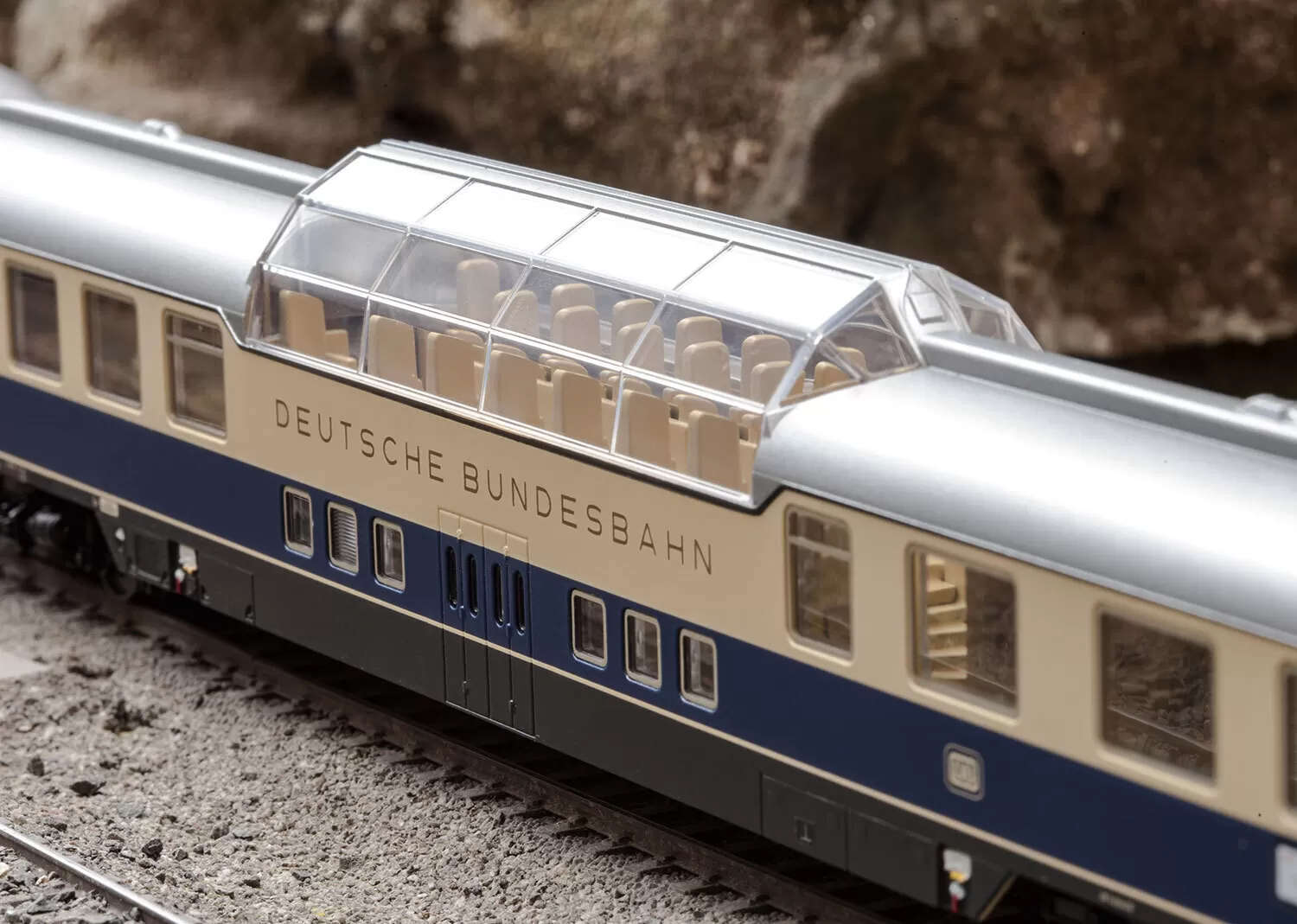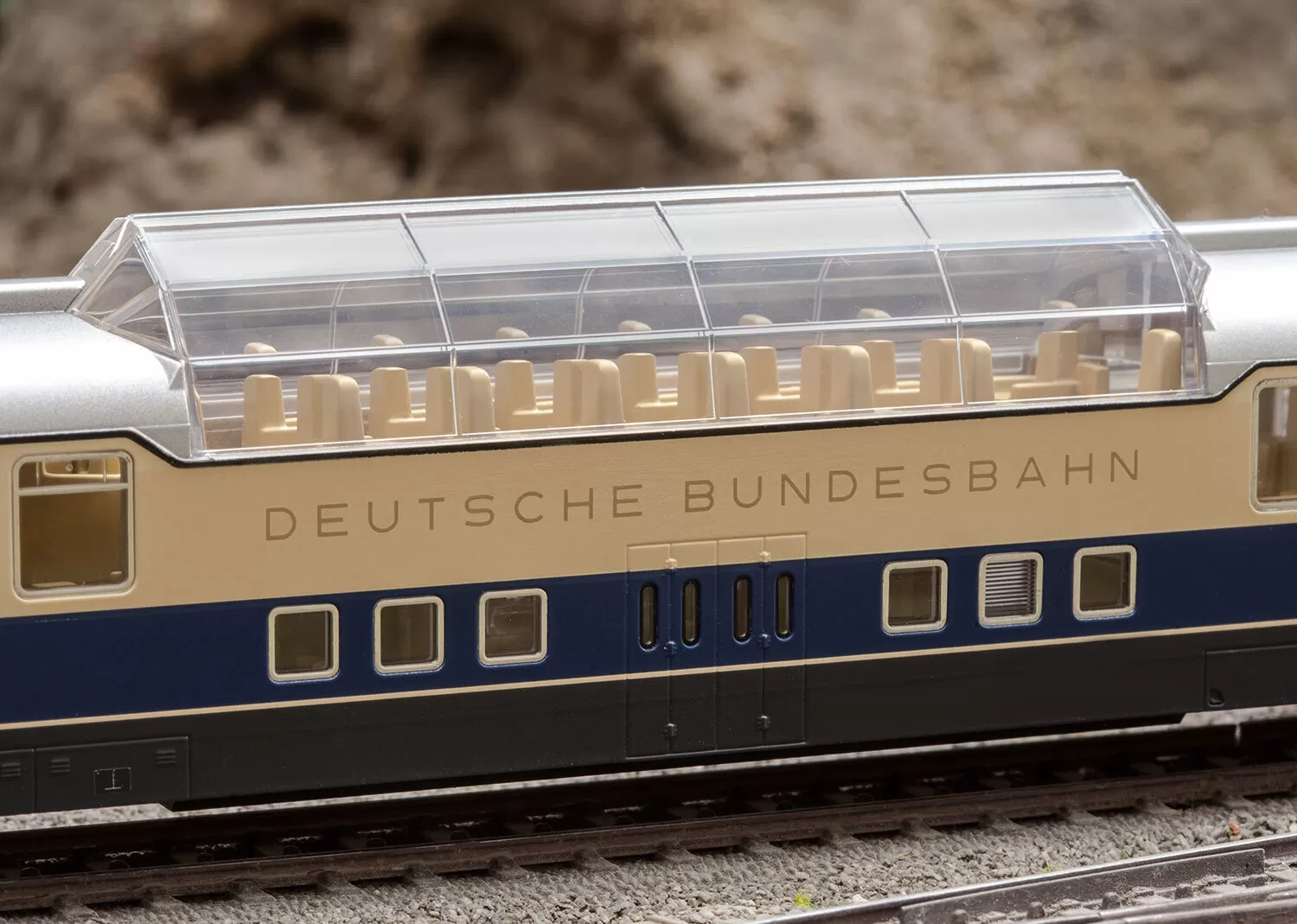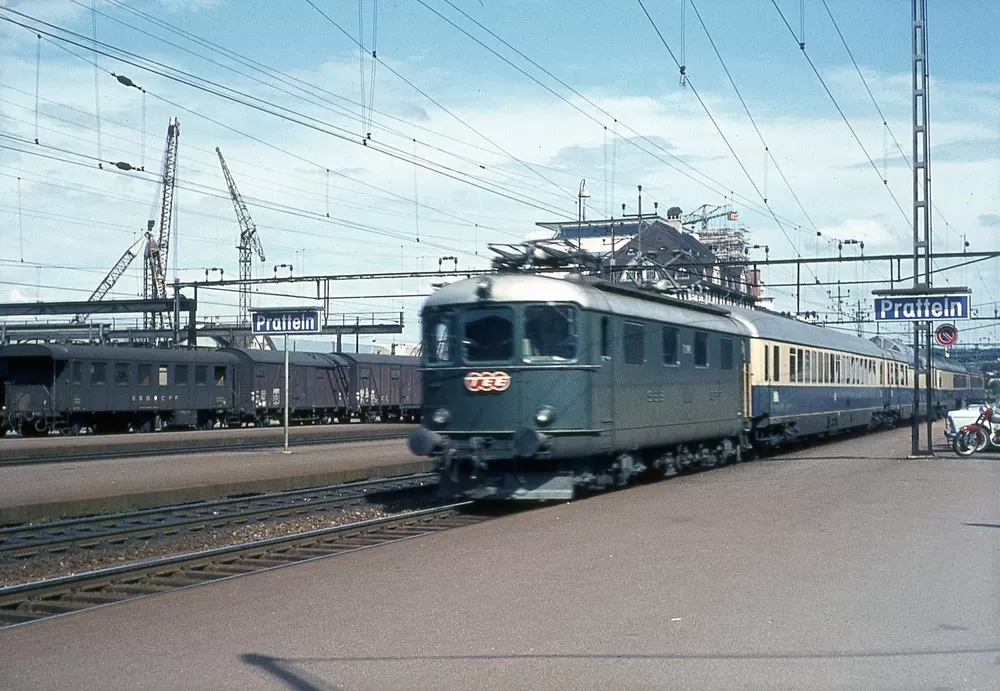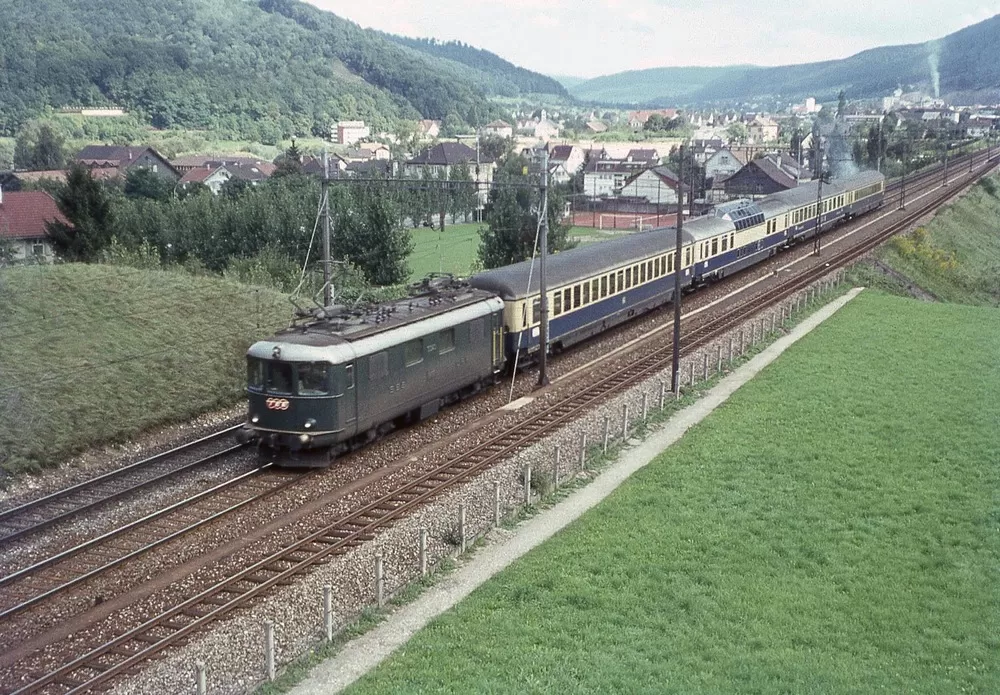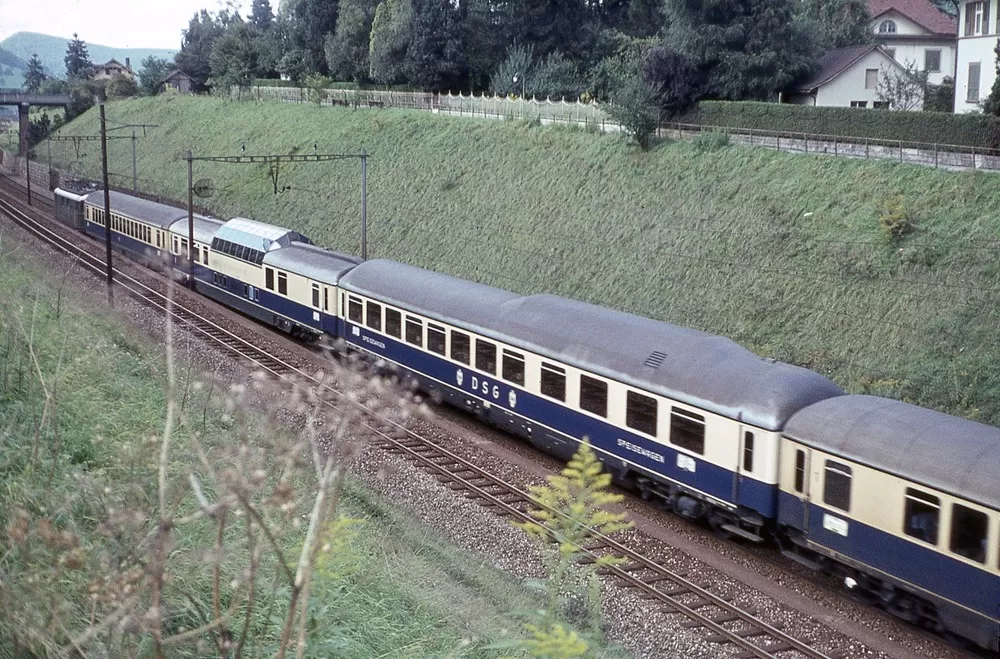TEE "Rheingold" (Switzerland - 1965)
- Swiss Federal Railways (SBB CFF FFS) class Re 4/4I electric locomotive - second production run in fir green basic paint scheme with TEE signs at the front;
- 2x Ap4üm-62 TEE open seating cars, 1st class;
- 1x AD4üm-62 TEE vista dome car, 1st class, dome with 4 windows;
- 1x WR4üm-62 TEE dining car.
All of the express train passenger cars lettered for the German Federal Railroad (DB) in the cobalt blue / beige "Rheingold" paint scheme.
Train route as TEE 10 "Rheingold": Dortmund – Essen – Duisburg – Cologne – Bonn – Mainz – Mannheim – Basle SBB – Bern – Geneva.
The train looks as it did in the summer of 1965:
Highlights:
- all of the cars include factory-installed LED interior lighting;
- current-conducting couplers that can be uncoupled;
- one open seating car includes built-in marker lights and a mounted pickup shoe;
- vista dome car includes new dome tooling and 4 large panorama windows;
- locomotive includes mfx+ World of Operation decoder and a variety of operating and sound functions.
Model: The locomotive has an mfx+ digital decoder and extensive light and sound functions. It also has controlled high-efficiency propulsion with a flywheel. All 4 axles powered by means of cardan shafts. Traction tires. The locomotive has separately applied roof walks. It also has separately applied metal grab irons. The Swiss headlight code (triple headlights / white marker light) change over with the direction of travel, will work in conventional operation, and can be controlled digitally. The headlights at Locomotive Ends 2 and 1 can be turned off separately in digital operation. The locomotive has the "double A" light function. Brake hoses are included that can be mounted on the locomotive. All of the TEE express train passenger cars have factory-installed LED interior lighting. One open seating car is equipped with red marker lights and a pickup shoe. The entire car consist is supplied with power by means of the factory-installed current-conducting couplers. Maintenance-free warm white and red LEDs are used for the lighting. The TEE vista dome car has a dome from the second production run with 4 large panorama windows. The underbodies and skirting for the cars are specific to the types of cars. The trucks are Minden-Deutz heavy designs, prototypically equipped with double brake shoes, magnet rail brakes, and separately applied generators. Total length over the buffers 131 cm / 51-1/2".
One-time series for the celebration of 60 years since the European TEE service started on June 2nd, 1957.
Prototype information: At the beginning of the Fifties, the central European railroads began to grapple intensively with the competition from airplanes and automobiles in order to win back for the railroads the well-to-do clientele of business travelers. Seven railroads (CFL, DB, FS, NS, SBB, SNCB, and SNCF) thus established in 1954 the so-called “TransEuropExpress Committee” in order to win back potential customers for long-distance service on medium distances with speed and a high level of service. It was quickly agreed that diesel powered rail cars were suitable vehicles for international train routes. Eight European railroads then agreed for the annual schedule for 1957/58 (the ÖBB came later) to introduce a system of high-quality fast trains exclusively for 1st class – the Trans-Europe-Express (TEE). Not all of the initially planned connections came into effect, but agreement was finally reached on 13 pairs of trains on a route network of 5,100 kilometers / 3,187 miles. Ten of these TEE trains with sonorous names went into operation for the summer schedule starting June 2, 1957: “Rhein-Main” (Amsterdam – Frankfurt), “Saphir” (Oostende – Dortmund), “Helvetia” (Hamburg – Zürich), “Paris-Ruhr” (Paris – Dortmund), “Edelweiss” (Amsterdam – Zürich), “Étoile du Nord” (Paris – Amsterdam), “Oiseau Bleu” (Paris – Brussels), “Arbalète” (Paris – Zürich), “Île de France” (Paris – Amsterdam), and “Mont Cenis” (Lyon – Milan). Added to this for the winter schedule in 1957 were the three remaining connections: “Mediolanum” (Munich – Innsbruck – Milan), “Ligure” (Marseille – Nice – Genoa – Milan), and “Parsifal” (Paris – Cologne – Dortmund). The DB, the FS, the NS/SBB, and the SNCF purchased diesel powered rail cars for these TEE services, fulfilled the demands for the highest level of comfort, and ran only 1st class.
Erstmals angekündigt: May 2017
In folgenden Katalogen / Broschüren vorgestellt:
Verfügbare Handbücher / andere Dokumente:
Zugehörige Eisenbahnfahrzeuge:
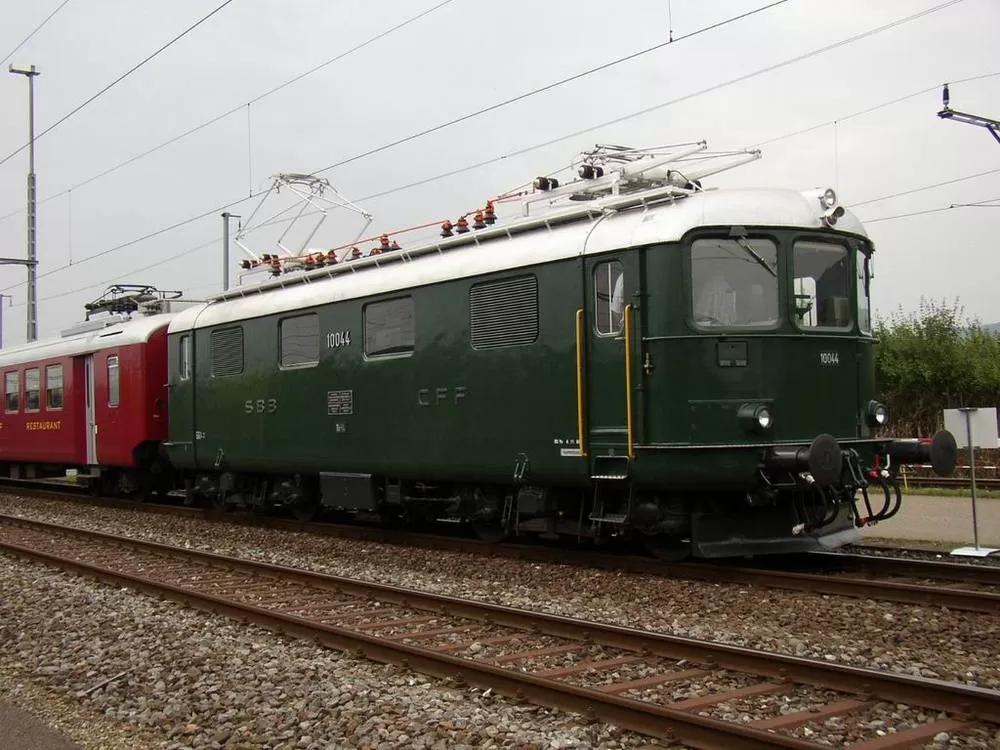
Re 4/4I 427 - 450 / 10027 - 10050
Registrierungsnummer: 10044
Railway company: SBB CFF FFS - Swiss Federal Railways
Registrierungsland: Switzerland

ADmh101 81-80 001 - 005
Auch bekannt als: ADümh101 81-80 001 - 005, AD4üm-62 10551 - 10553, SDA4üm 10431 - 10433, AD4üm-63 10554 - 10555
Registrierungsnummer: 10554
Railway company: DB - German Federal Railways
Registrierungsland: Germany

Apmz121.0 / 121.3 / 121.4
Auch bekannt als: SA4ümm, Ap4üm-62, Apümh121, Apmh121
Registrierungsnummer: 10506
Railway company: DB - German Federal Railways
Registrierungsland: Germany

Apmz121.0 / 121.3 / 121.4
Auch bekannt als: SA4ümm, Ap4üm-62, Apümh121, Apmh121
Registrierungsnummer: 10508
Railway company: DB - German Federal Railways
Registrierungsland: Germany

WRmh131 88-80 001 - 005
Auch bekannt als: WRümh131 88-80 001 - 005, SDWR4üm 101 - 102, WR4üm-62 11001 - 11002, WR4üm-63 11103 - 11105
Registrierungsnummer: 11 104
Railway company: DB - German Federal Railways
Registrierungsland: Germany
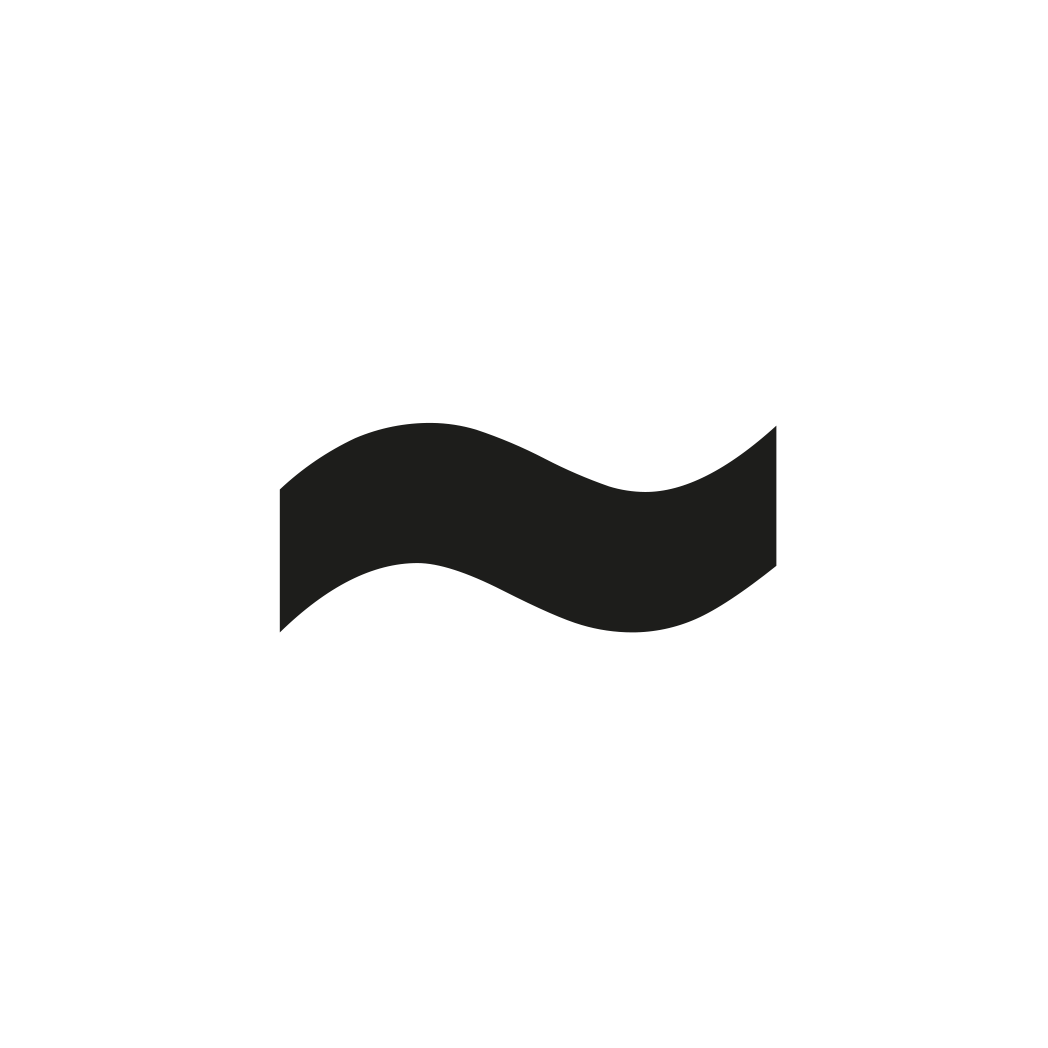










Diskussionsforum

